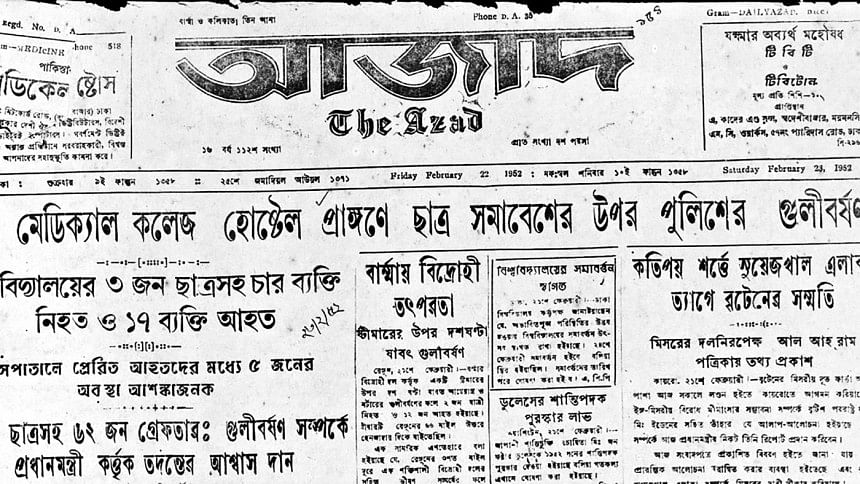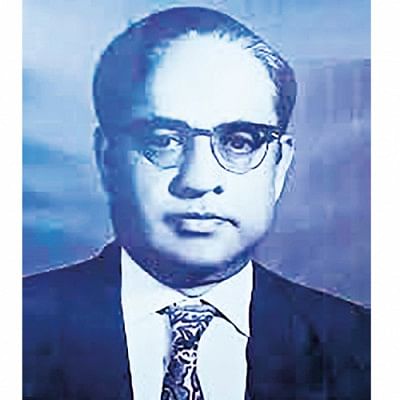Language Movement: The Momentous Phase


Prime Minister Khwajaj Nazimuddin visited East Bengal in January, 1952, and addressed a public meeting on the 26th of January where he declared that Urdu alone must be the State Language of Pakistan. His announcement came as a rude shock especially because he was the man, who as the Chief Minister of East Bengal in 1948, entered into an Agreement with the Committee of Action of State Language to recommend to the Constituent Assembly to make Bengali as one of the State Languages. The terms of the said Agreement, inter alia, were:
1. The East Bengal Assembly (which was in session at that time) shall adopt a resolution for making Bengali as the official language of East Bengal and the medium of instruction in all stages of education.
2. The East Bengal Assembly shall by another resolution recommend to the Central Government to make Bengali one of the State Languages.
The students and the political elements in East Bengal were taken aback.
A Committee of Action, representing all political parties and other interests, was formed to launch a movement. The first sitting of the representatives was held in the Dacca City Muktear Bar Library. The next meeting was held at 158 Mughaltooly, Dacca, to chalk out the programme of action.
On the 19th of February a meeting was held at Nawabpur Road, where it was decided that the general strike and the proposed procession should be peaceful on the 21st. On the 10th afternoon, another meeting was held and It was decided that the Committee believing as it did in constitutional method of agitation would not break any provision of Law and if there was any such attempt by any affiliated group of the Committee, the Committee would stand dissolved. It was also decided that the Committee would be in continuous session from early morning at their office at Nawabpur Road.
At about 9 AM in the morning of the 21st of February, the members of the Committee of Action were informed that the students of Dacca University were not in agreement with the decision taken by the Committee of Action and they had decided to break the law if necessary. As Section 144 of the Code of Criminal Procedure was promulgated by the District Magistrate on the previous day, the procession was called off. The students, however, decided to have processions in batches towards Jagannath Hall, where the Assembly Session was going on. The Committee of Action In the circumstances decided to depute some representatives to convince the students of the University not to come in clash with the police who, however, failed to persuade them.
At 9:30 AM in the morning, some boys were arrested from Nawabpur Road for picketing before the shops. At about 10 AM, in accordance with the de¬cisions taken by the students, the first batch of the students marched in procession and reached near the Medical College gate when they were arrested and put into a van and taken away by the police. The next batch followed with the same result and this procedure continued until about 1:30 PM. when the police decided to use tear gas. A police cordon was thrown around the Salimullah Muslim Hall. Because of the use of tear gas the students became very agitated and they started pelting at the police. At 2 PM the police took position and the East Pakistan Rifles were also brought in to assist them. The police fired at the students near the Medical College gate where there was a large crowd of students. There were newly-constructed kutcha huts which were alongside the gate. After a few rounds were fired at the students they dispersed and a report of innumerable persons killed spread like fire. Automatically, all vehicles stopped plying which were on the roads in spite of the call for hartal. Three dead bodies were brought to the Medical College and they were sent to the morgue, at that time unidentified.
By 3 pm. the members of the Assembly which was in Session insisted that Mr. Nurul Amin, the then Chief Minister, should go to the place of occurrence, but Mr. Nurul Amin refused to accept the suggestion. Moulana Tarkabagish, Khairat Hossain, Mrs. Anwara Khatoon with all Congress Members of the Assembly walked out of the Assembly followed by Abul Kalam Shamsuddin, Editor of the Azad at that time, and announced his resignation in protest against the firing on the students. Army was called out and they started patrolling the streets. Barricades, however, were placed so that they could not enter into the old city. The Army started patrolling from Sadarghat to the University area. Halls were all surrounded by the army and police and the students were not allowed to go out. The then Inspector General of Police at that time, took the command himself and cordoned the Halls. On the following day some more people were killed by the Army who started shooting indiscriminately. The dead included a clerk of the Dacca High Court and a rickshaw puller. The Central Committee of Action was dissolved on the basis of the resolution the Committee adopted earlier. The leadership was taken over by the Youth League and the University students. The students raised funds, hired microphones and placed them on the roofs of the Halls and addressed the students continuously from there. The Ministers took shelter In the Cantonment area and for about a week police oppression continued both in the city of Dacca and Narayanganj. In Narayanganj the worst affected place was the house of Khan Sahib Osman Ali, whose house was ransacked by the police, the inmates were dragged out, even the women and children were not spared. The Headmistress, Morgan Girls' School, was arrested and put into jail. The leaders of the Movement In Dacca went underground, but they were arrested within a week from an abandoned house in Purana Paltan. With their arrest the Movement entered the second phase, a new Committee of Action was set up with Mr. Ataur Rahman Khan as Convener, as Kazi Golam Mahboob the first convener went underground. Many people were arrested including Messrs Abul Hashem, Shamsul Haque, Moulana Abdul Hamid Khan Bhashani and innumerable students and workers. Although the movement inevitably lost its original momentum within a month, yet it continued to dominate the Biharis and minds of the Bengalees.
Kamruddin Ahmad actively participated in the language movement in 1948. In 1952, he was a member of the All-party State Language Action Committee.
This article was first published in The Morning News on February 21, 1972.

 For all latest news, follow The Daily Star's Google News channel.
For all latest news, follow The Daily Star's Google News channel. 



Comments